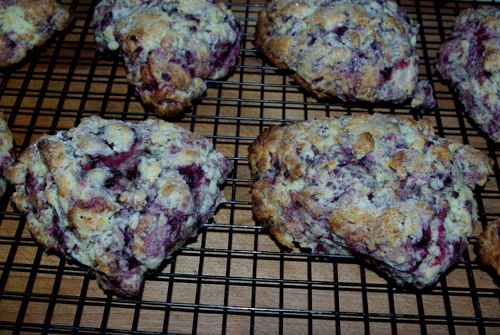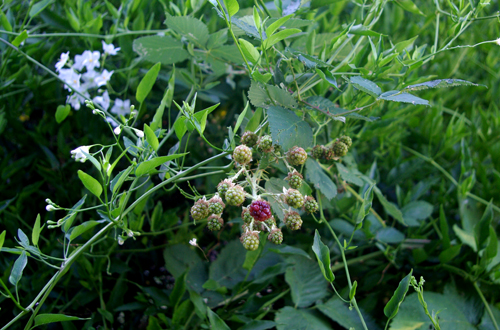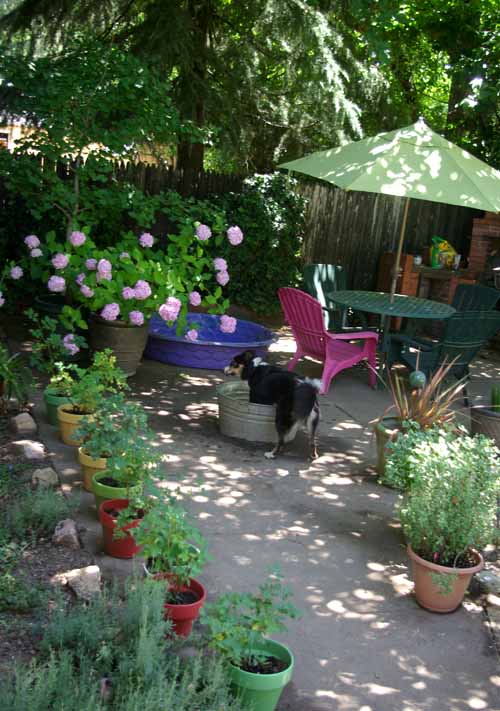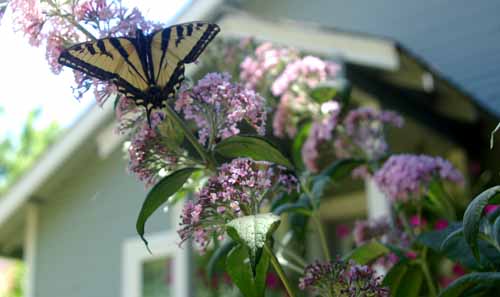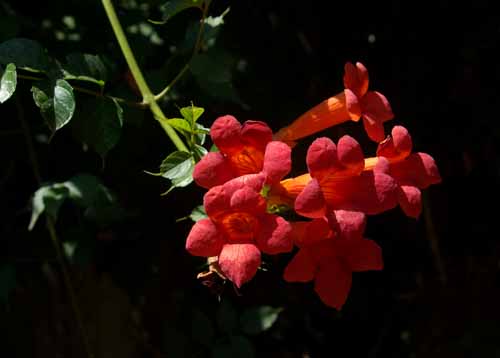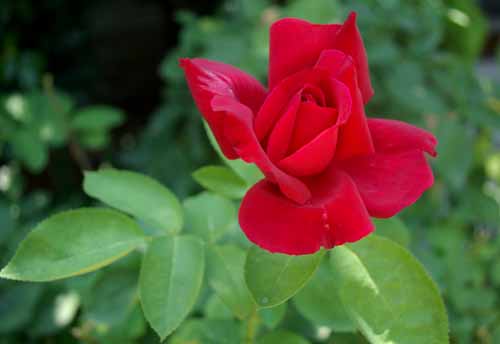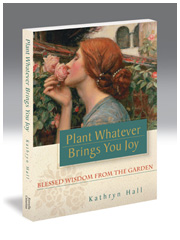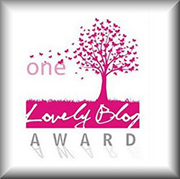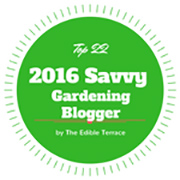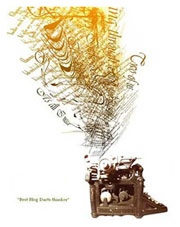Dearest readers, many many months ago I detailed how I make scones, which I now make weekly. The above photo will show you how they have evolved as I am now experimenting with using fresh fruit, particularly berries. This morning’s lot I filled with blackberries which I am slowly harvesting from the front yard. This was a wild thing which in the past I’d clipped back, as it’s growing among the nandina, but in light of a shift towards more homegrown foods I thought I’d take advantage of its living amongst us and let it spread, which I’m glad I did.
I’ve plucked at least $15 worth of berries from its thorny stalks in the last ten days, and I know they are organic, lovingly cared for and tenderly picked. So they are included in today’s scone fare and it turns out they are a good choice and lovely besides. Happy result.
The scones are part of an ever growing trend in my home to have certain prepared foods on hand, ready for our busy lives: an Always There list. There are always scones. There is always green tea. There are a few others I’m slowly establishing. This week the one I’m most excited about is iced chai, for hot summer days, of which there have been abundance lately!
Prior, for years, I always have made chai on holidays. Recently it occurred to me to ask why? Why not make it frequently? We love it. It’s right up there with “saving” your favorite dress or shoes or bag (or china) for special occasions. And there’s a place for that, surely. But why relegate chai to only a few times a year when we adore it and it’s so good for us? Added to this expansive line of thinking I decided to try iced chai, which was such a hit I made the leap to add it to the Always There list. This involves a slight inner commitment of time and resources. I have done that and today was my first day. I’m going to share with you how I do that and perhaps you will decide to do same. Over the years I’ve become rather applauded for this recipe so and I’m pleased and honored to share with you today.
This is so easy. First you cut up a big piece of ginger root. You probably are aware that ginger root aids in digestion, stimulates circulation and is a powerful anti-inflammatory. How wonderful I’m increasing this marvelous food used for centuries in this capacity into my diet.
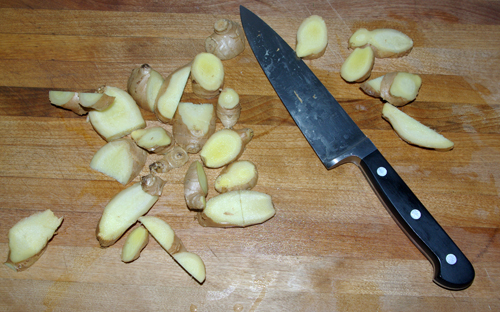
Place the ginger in a stainless steel pan with seven cups of water, two or three sticks of cinnamon, and a small handful of cardamom seeds. (I counted this morning; I used 18.) Cardamom is also good for facilitating digestion. There are also some interesting studies in Scandinavia regarding the combining of cinnamon with honey for arthritis pain. Check that out. Bottom line: chai is good for you and beyond delicious.
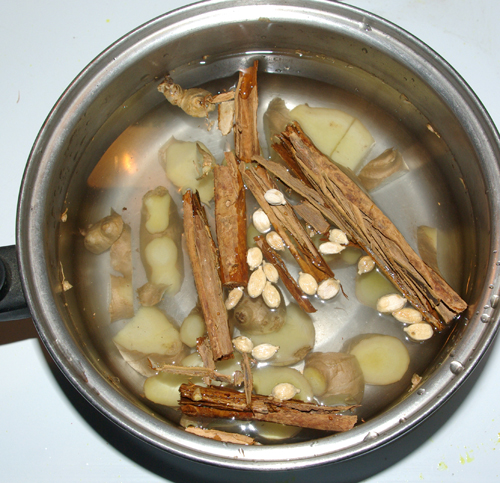
Bring to a slow boil, then cover with the lid ajar and let this mixture boil for about a half an hour. The only thing you need to do is to take a wooden spoon and push the cardamom seeds up against side of pan so they open, releasing their goodness and fragrance into the mixture. It will now look like this.

OK, you’ve removed from heat. Now to this mixture you want to add eight to ten English Breakfast tea bags. If they have strings, cut them off without puncturing the bags. They just create a tangle later. Cover this and allow to steep for at least ten minutes. Then remove lid and add two cups of high quality milk. [Note I swear by Strauss Family Dairy whole milk, which I can get in N. CA. I don’t know their distribution range.] Now add honey to taste. And allow to thoroughly cool.
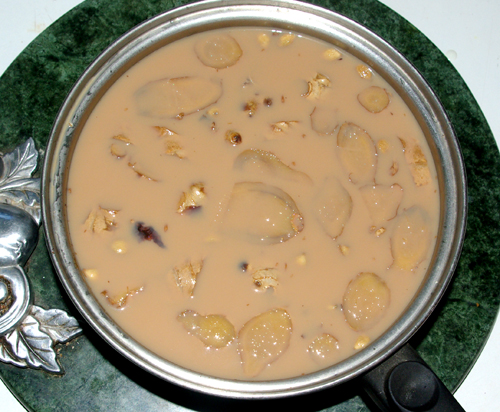
I now remove all the tea bags, but leave the other ingredients for their great goodness only enhances with time. I put into a nice sturdy red Le Creuset pitcher I happen to own and love. This will invariably become The Chai pitcher for the rest of summer, reliably in the front of the frig. Happy us.
And here is how I chose to serve ours today. We prefer iced chai sans ice, ironically. Chilled is enough for us. But traditionally, I am certain, iced chai would be chock full of, well, ice! 🙂
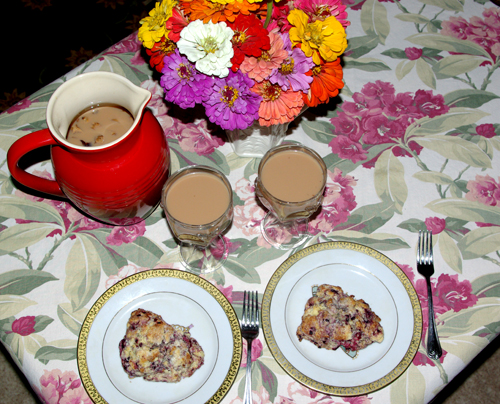
I do hope you will try the chai. Please let me know how you liked it. And may this nurture your bodies, your homes and your spirits.
Love and kitchen blessings!
Kathryn xoxo
Yummy postscript: Began wondering this hot summer afternoon how vanilla ice cream would fare in iced chai. Let me highly recommend chai floats!!
Posted on July 21st, 2009 by Kathryn
Filed under: People at Work | 22 Comments »

